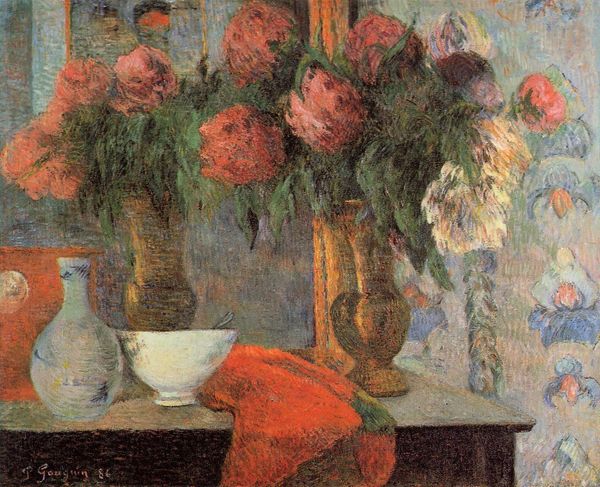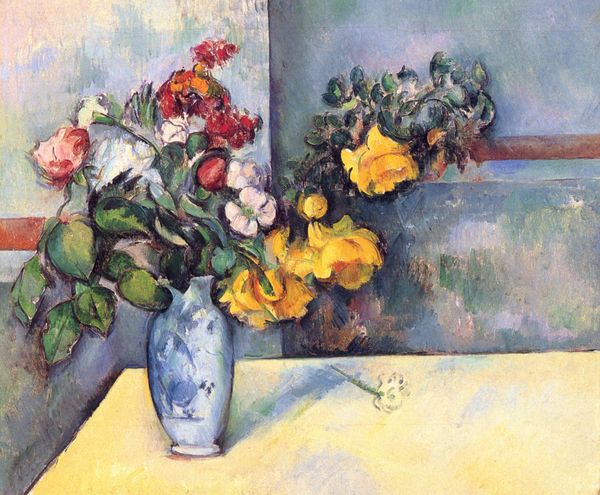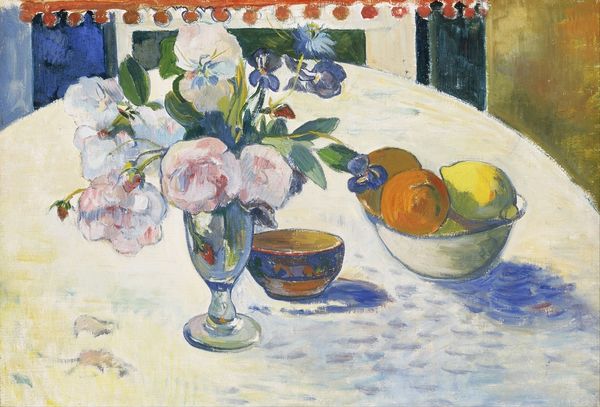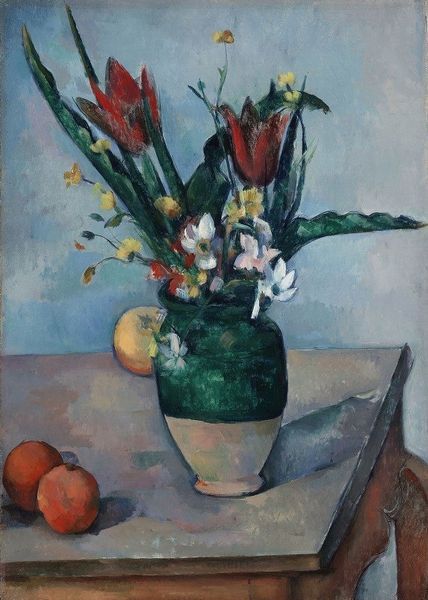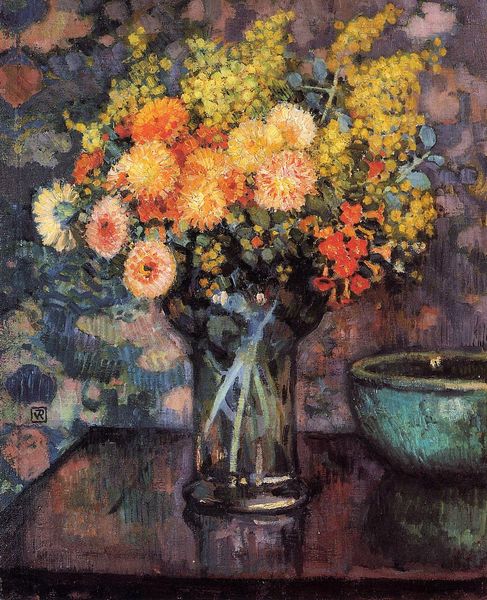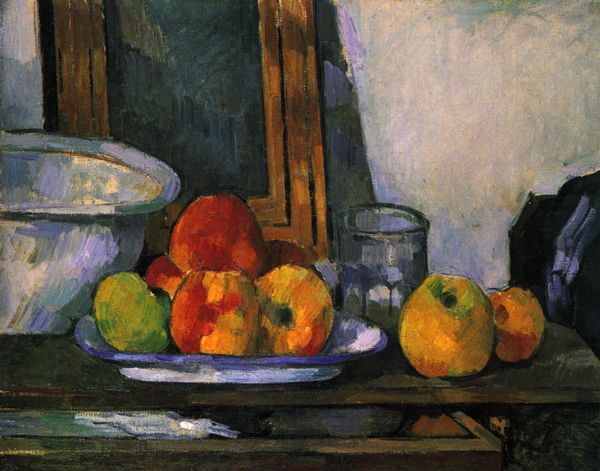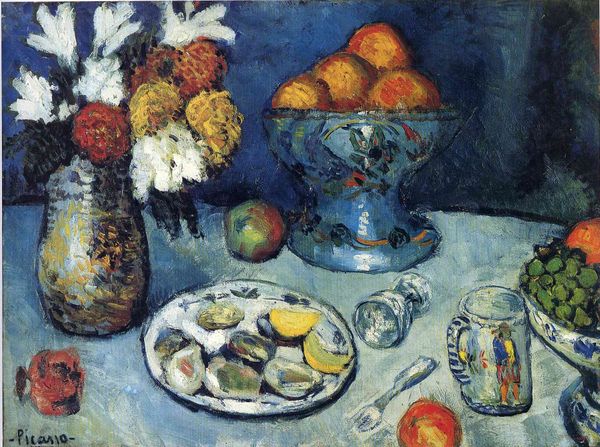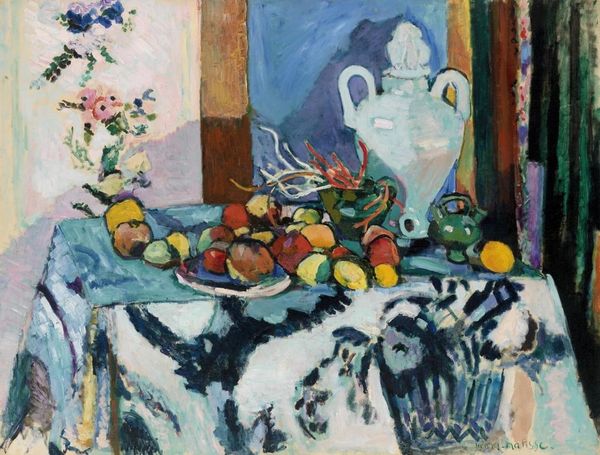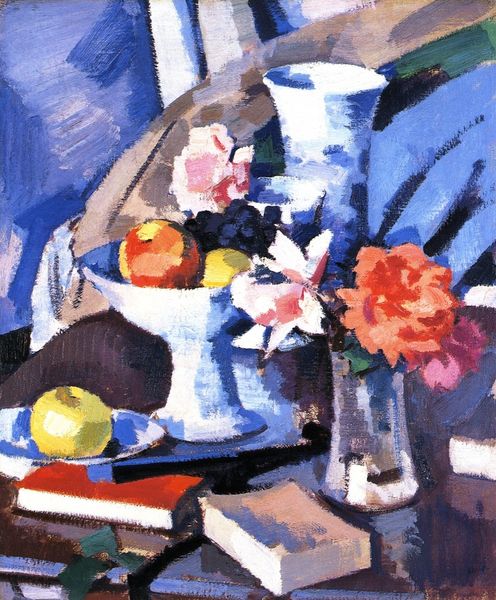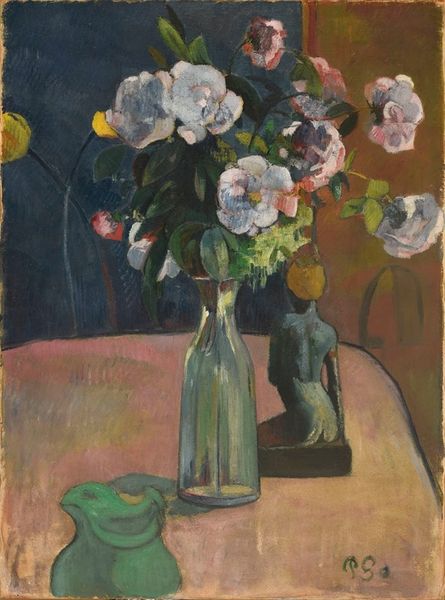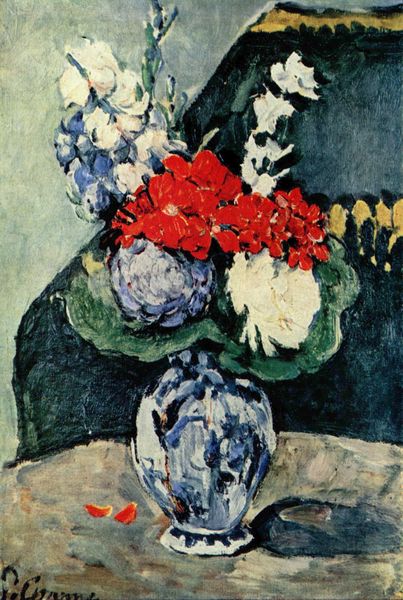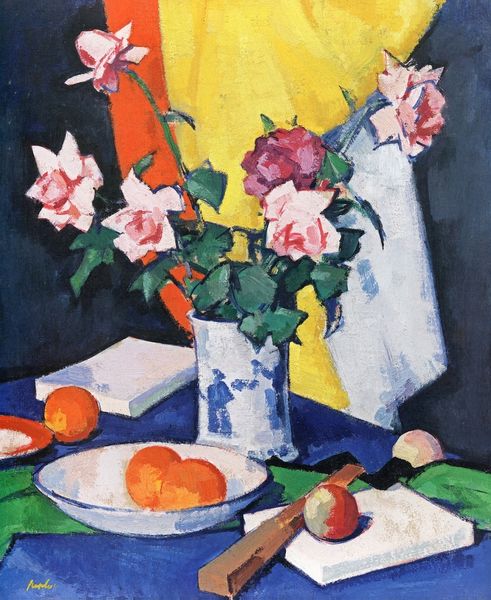
painting, oil-paint
#
still-life
#
gouache
#
painting
#
oil-paint
#
landscape
#
oil painting
#
symbolism
#
post-impressionism
Dimensions: 62 x 51 cm
Copyright: Public domain
Curator: Right in front of us, we have Paul Cézanne's "The Blue Vase," painted in 1887. Editor: My first impression is one of quiet contemplation. There's something both comforting and a bit unsettling about the flattened perspective and almost palpable texture of the paint. Curator: Precisely! Cézanne was pushing against the academic painting traditions of his time. The flowers in that iconic blue vase might seem straightforward, but look closer. The way the composition denies a conventional vanishing point speaks volumes. One could see the vase as symbolic, something solid but ready to burst or to spill its content if the angle shifts slightly... Editor: Absolutely. For me, this goes beyond just subverting perspective; it's also about the tangible physicality of the paint itself. You can almost feel the individual brushstrokes building up the form. How do you think the choices about surface and materials relate to the emerging market for this kind of domestic painting, given the broader societal shifts and bourgeois patronage happening then? Curator: That's a crucial observation. Cézanne’s interest in materiality, however, points us toward an investigation of color. Blue often is tied to faithfulness but also a sense of melancholy... paired with the flowers here – roses, irises, maybe anemones, all imbued with their specific Victorian symbolisms. Is it an evocation of lost love, a meditation on transient beauty, or a memory? Editor: I think your idea on the relation between object and surface texture gets us close to an answer, in fact, there are clear and not accidental variations here, which relate, for instance to the difference between the vase as object and the floral material inside it. I do see your point on this "still life" in motion: its very dynamism defies any one definitive meaning. Considering his technique with oil paints and his break from Impressionism, would you agree this piece set the stage for new aesthetic paradigms to come? Curator: Most definitely! In refusing a singular viewpoint and prioritizing constructed planes of color, "The Blue Vase" invited us to rethink how we perceive our world, influencing everything that came next: from cubism to abstraction. The visual impact echoes even today. Editor: And it makes one ponder about how art is made to start with: It is very tempting here to just talk of colors and subject. Ultimately, getting past our impulse to interpret immediately leads us to contemplate both materials and our cultural codes.
Comments
No comments
Be the first to comment and join the conversation on the ultimate creative platform.
